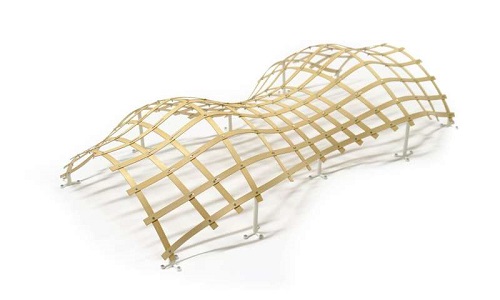 Sunday, September 29, 2024
Sunday, September 29, 2024  Sunday, September 29, 2024
Sunday, September 29, 2024 
An amazing construction method for curved structures was developed at TU Wien (Vienna): With a flick of the wrist, flat grids become a 3-D shape.
How can you turn something flat into something three-dimensional? In architecture and design this question often plays an important role. A team of mathematicians from TU Wien (Vienna) has now presented a technique that solves this problem in an amazingly simple way: You choose any curved surface and from its shape you can calculate a flat grid of straight bars that can be folded out to the desired curved structure with a single movement. The result is a stable form that can even carry loads due to its mechanical tension.
Suppose you screw ordinary straight bars together at right angles to form a grid, so that a completely regular pattern of small squares is created. Such a grid can be distorted: all angles of the grid change simultaneously, parallel bars remain parallel, and the squares become parallelograms. But this does not change the fact that all bars are in the same plane. The structure is still flat.
The crucial question now is: What happens if the bars are not parallel at the beginning, but are joined together at different angles? “Such a grid can no longer be distorted within the plane,” explains Przemyslaw Musialski. “When you open it up, the bars have to bend. They move out of the plane into the third dimension and form a curved shape.”
At the Center for Geometry and Computational Design (GCD) (Institute for Discrete Mathematics and Geometry) at TU Wien, Musialski and his team developed a method that can be used to calculate what the flat, two-dimensional grid must look like in order to produce exactly the desired three-dimensional shape when it is unfolded. “Our method is based on findings in differential geometry, it is relatively simple and does not require computationally intensive simulations,” says Stefan Pillwein, first author of the current publication, which was presented at the renowned SIGGRAPH conference and published in the journal ACM Transactions on Graphics.